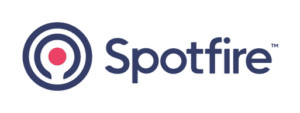Spotfire is a powerful business intelligence and analytics software designed for data visualization, exploration, and predictive modeling. It enables users to uncover insights from complex datasets through interactive dashboards, advanced analytics, and real-time data processing.
With its intuitive interface, Spotfire supports data-driven decision-making across industries, offering tools for statistical analysis, data wrangling, and collaboration, empowering organizations to transform raw data into actionable business strategies.

